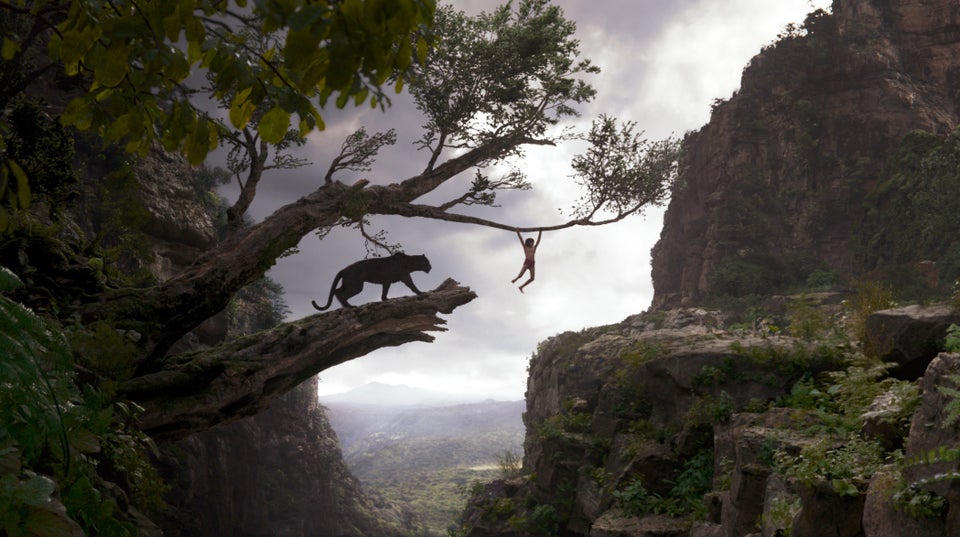For Architectural Digest, by Laura Morgan.
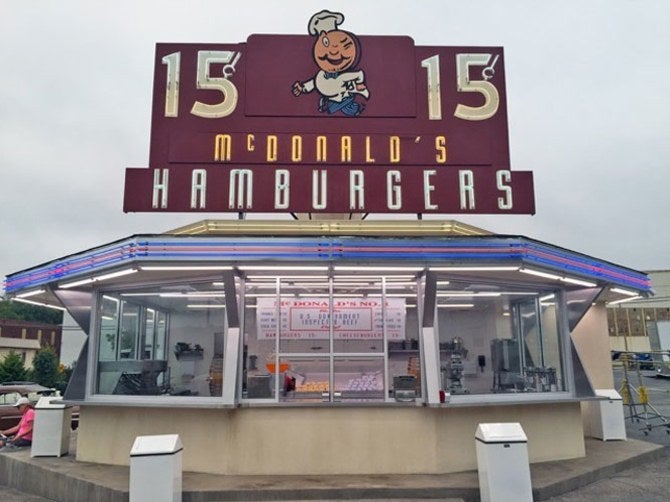
Corenblith's reproduction of the original McDonald's
We’ve seen our share of Steve Jobs movies over the past few years, but an intriguing new film tells the story of the business that launched another type of Mac — the Big Mac. The 1950s-set The Founder tackles the tale of how Ray Kroc (Michael Keaton) took a little burger outfit founded by brothers Mac and Dick McDonald and spun it into the multibillion-dollar McDonald’s we know today. Getting the story just right relied in no small part on the talents of production designer Michael Corenblith (Apollo 13, Saving Mr. Banks, The Blind Side, and more), who was tasked with re-creating, practically beam by beam, the iconic design of those famous first restaurants, in all their Golden Arch–spanning glory. Here, Corenblith reveals how he handled the painstaking process and why the architecture still resonates today.
Architectural Digest: How did you jump-start the creative process?
Michael Corenblith: Well, this project was a little bit different in the fact that, really, what I’m doing is historic re-creations. Usually, on a project of this sort, you might have the cooperation of whatever entity you’re depicting, be it a space capsule or Walt Disney’s office. I generally have relatively unfettered access to the archives. But the McDonald’s corporation had taken no stance toward this picture, so I was aware that there would be extra scrutiny. I didn’t want it to be archivally incorrect. The research process was like that of other period pictures, but to a bit of a higher standard.
AD: What type of research did you have to do?
MC: First, I did the normal research in terms of image acquisition and dove as deep as I could into those resources. Second, there were some archival blueprints that were available on eBay, and third, there was the site of the brothers’ original restaurant in San Bernardino.
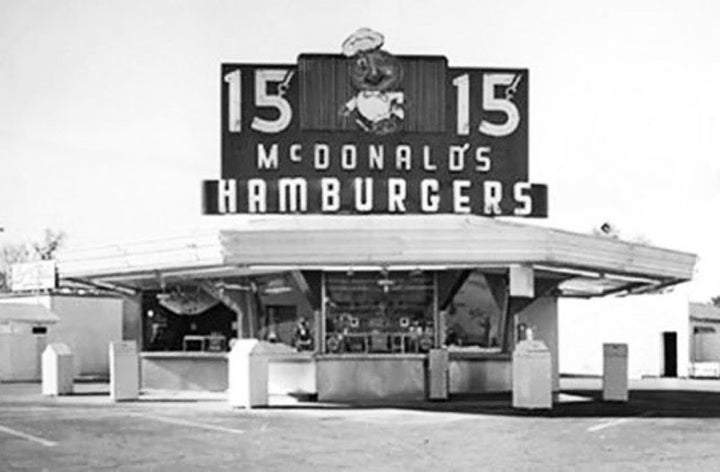
The original McDonald's in San Bernardino, California
AD: What else factored into your thinking?
MC: In addition to the archival blueprints of the Golden Arches, I was also given access to some materials through the family of Dick and Mac McDonald, which gave me a little more verification of assumptions that I had already made. But the most important thing is that McDonald’s Number 3, which opened in August 1953, is in Downey, California, which is about a 45-minute drive from where I live. It was the second of the Golden Arches model. It’s like a little time capsule—it’s virtually unchanged on the exterior. The first thing that I had to do was understand the fundamentals of the intersecting geometries and how all the parts and pieces of the arches fit together.
AD: Did you take any artistic liberties?
MC: My intention was to land the dart with a triple bull’s-eye at every opportunity. There were no liberties whatsoever. I wanted to depict it as accurately as humanly possible in order to tell the true origin story. It was no different than I would approach something like Apollo 13.
AD: Did you have to change anything at all so that it would translate on camera?
MC: No, as a matter of fact. In order to preserve the integrity of the space, we had to come up with a lot of very clever solutions to shoot in such tight spaces. One of the themes in the picture is that the McDonald brothers had taken the assembly-line efficiencies that had won the Second World War and applied those to a restaurant kitchen for the first time. There’s a lovely montage at the beginning of the film of the McDonald brothers telling their story to Ray Kroc; they had used a tennis court to lay out the kitchen components and then choreographed how everyone could work in harmony and in concert. That was really important in the telling of the story — those efficiencies are what made the franchise so unique.
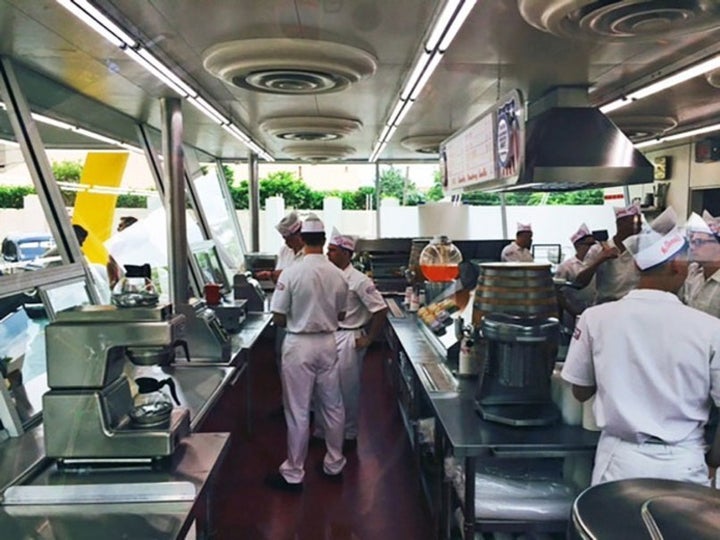
The film's depiction of the original assembly line at McDonald's
AD: How did you make the space limitations work?
MC: I worked with the cinematographer John Schwartzman, who I’ve worked with on a number of pictures as recently as Saving Mr. Banks. The interior shots were achieved by taking out these really oversize commercial-scale glass windows and positioning the cameras and dollies on the outside perimeters. But I just saw the film again and it feels very intimate; it’s like you are in there with the characters as the food is being prepared.
AD: When it came to dressing the set, what decisions did you make?
MC: My other key collaborator was set decorator Susan Benjamin. The kitchen layouts were so incredibly specific, so that put a tremendous onus on her to locate period-correct, working kitchen components—the grill, the fryers—all of those things had to function. The grills needed to be able to grill hamburgers, the deep fryers needed to be able to make French fries, but at the same time they needed to be retrofitted and built to code.
AD: Are you a fan of midcentury design?
MC: I am. Just prior to this I did a picture for Disney called The Finest Hours, which was the story of the most celebrated small-boat rescue in Coast Guard history and is set in exactly the same era. So it was interesting to do back-to-back pictures that were based in 1954. And a good portion of Saving Mr. Banks was set in the same period, so I've had a lot of experience dealing with the mid-’50s.
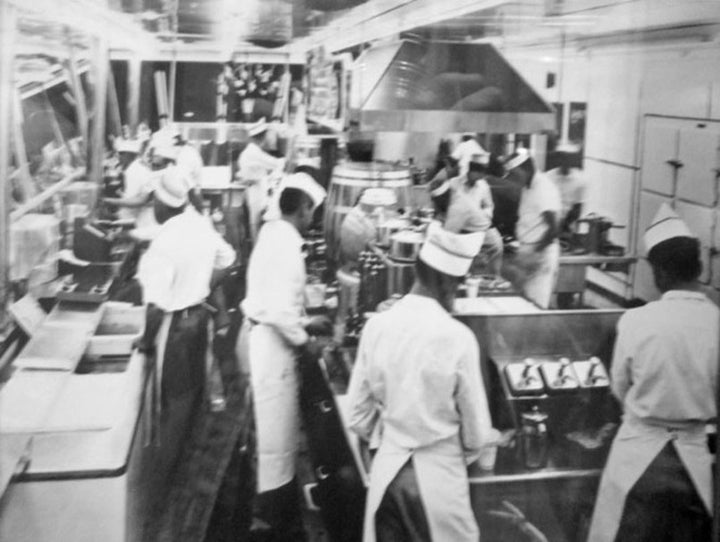
The assembly line at the original McDonald's in San Bernardino, California
AD: What do you love about the McDonald's design?
MC: The San Bernardino restaurant is really emblematic of a prewar, car-hop culture—that great Americana roadside architecture. I wanted the various shapes and forms to feel very, very prewar—like they originated in the 1940s and were still forward-looking for their time. There was a book by Robert Venturi that was very important when I was in architecture school called Learning from Las Vegas, and he was positive that there was eventually going to be a merger between signage and architecture. We can extrapolate that out to the Las Vegas casinos of the present day. So during the movie we move from San Bernardino, which is representative of an individual culture—a stand-alone, roadside piece—to the Golden Arches that represent a space-age vocabulary and new mass-marketing concept. There's this notion of a postwar America, of opportunity and optimism in the early 1950s space-age Sputnik vocabulary.
AD: How many structures did you have to build for the movie?
MC: The fact that they could almost self-replicate made my life a lot easier in terms of our limited budget. It really allowed us to only build one primary hero restaurant. Then it became a question of using a lot of cinematic tricks to try to make that stand in for up to a dozen different places. I designed different peripheral wall modules, in different shapes and sizes; some had planters, some had curvilinear components, and some had rectilinear components. But in order to make it work for a number of different locations, I realized that a simple quick-read cue was to change the parking arrangements. Just the arrangement of the automobiles around the franchise could make the one location look like different places. The key structure and the Golden Arches were prefabricated in a construction mill and then assembled on-site.
AD: What do you love about the arches?
MC: The parabolic arches actually served a functional, structural purpose. They were iconic, meant to be seen from a moving automobile traveling at a fast speed. You would see the arches before you saw anything else. I just love this notion of there being this merger between architecture and signage. You don't really need to see the name McDonald's to understand where you are when you see the arches. Today the arches have moved away from being integral to the structures of the restaurants to being purely symbolic in terms of their design being melded into the M of the logo. But I think there’s a pent-up demand to bring back those iconic Golden Arches. There are very few people that I have spoken to who cannot really tell you, in great detail, about the first time they ever ate at a McDonald's. It’s part of the collective conscious, and it’s seared in there pretty deeply.
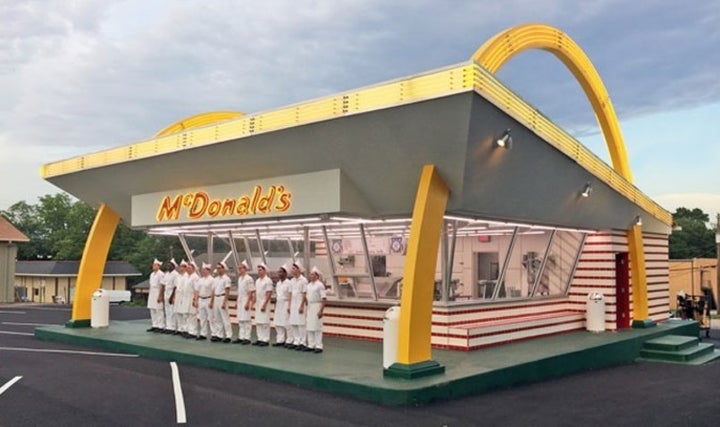
A reproduction of the Golden Arches, as seen in the film The Founder
More from Architectural Digest:


